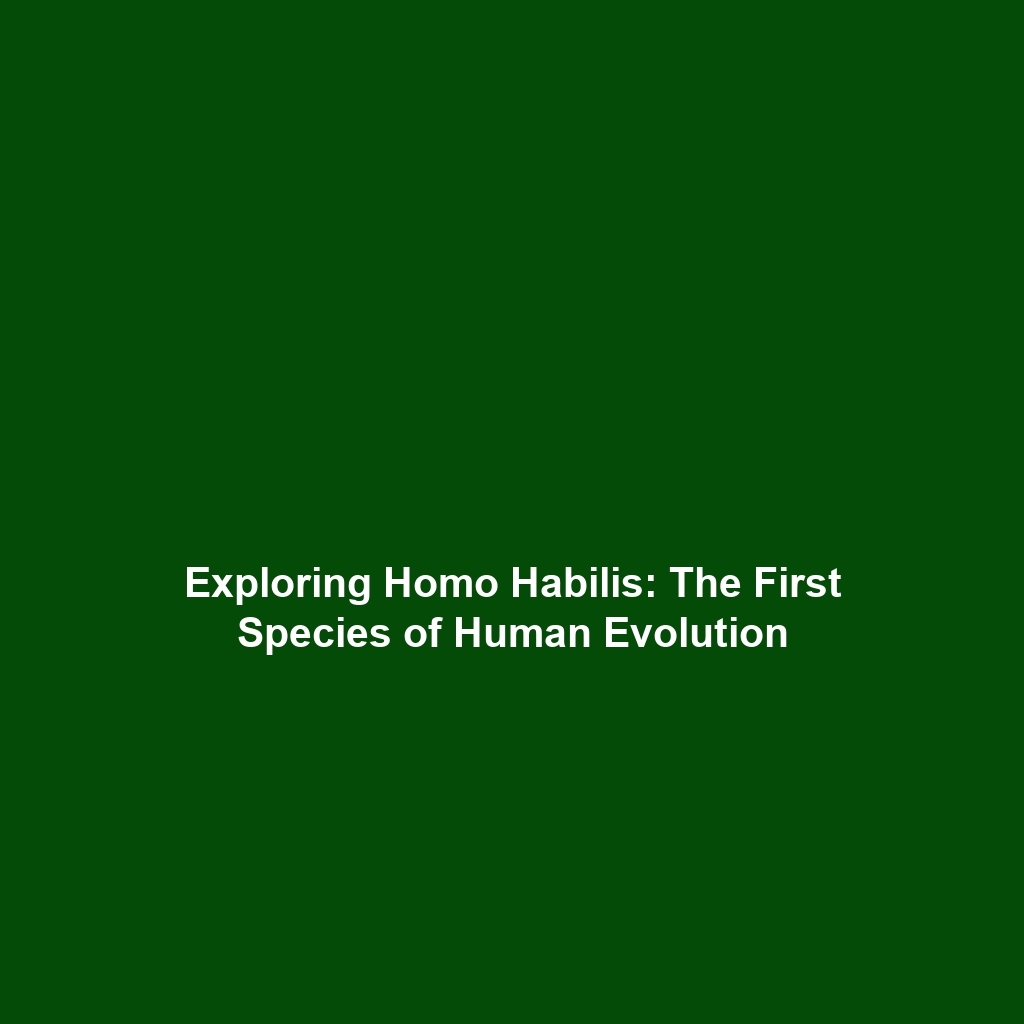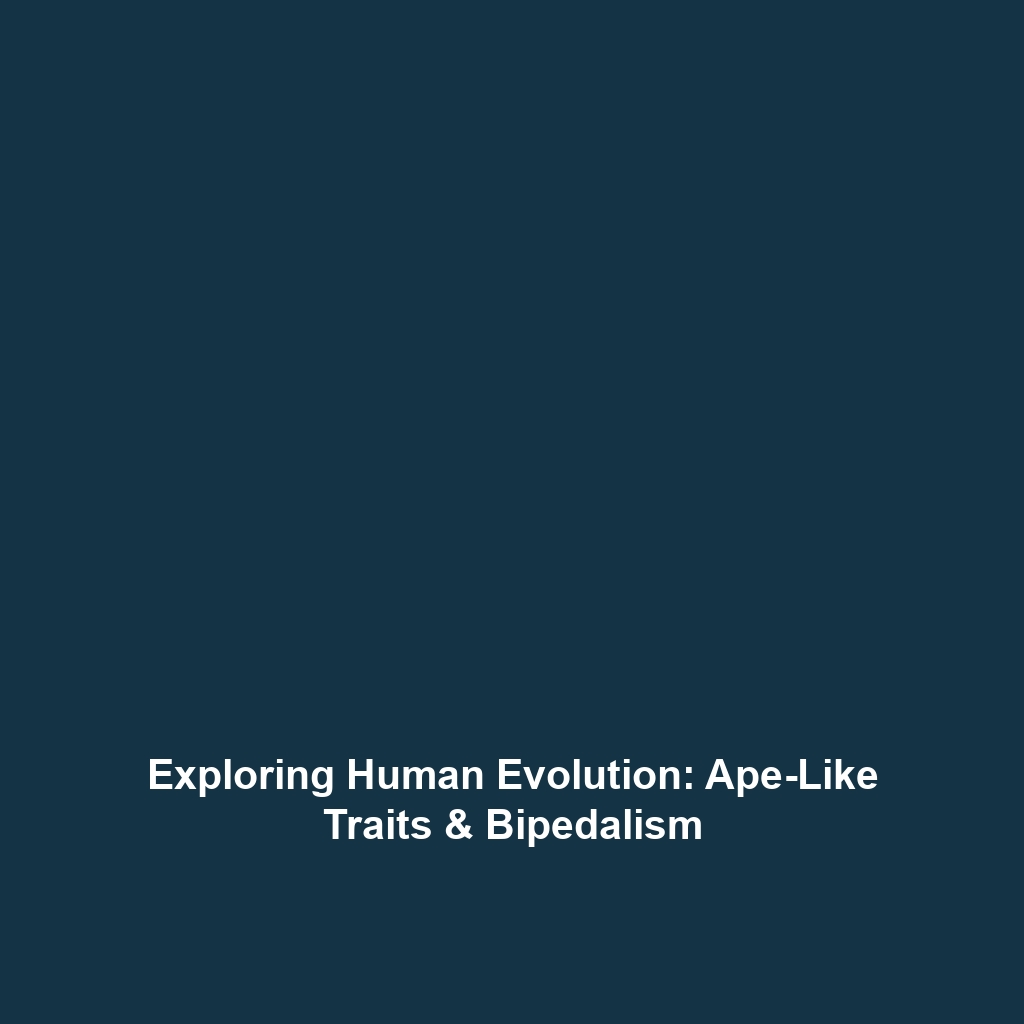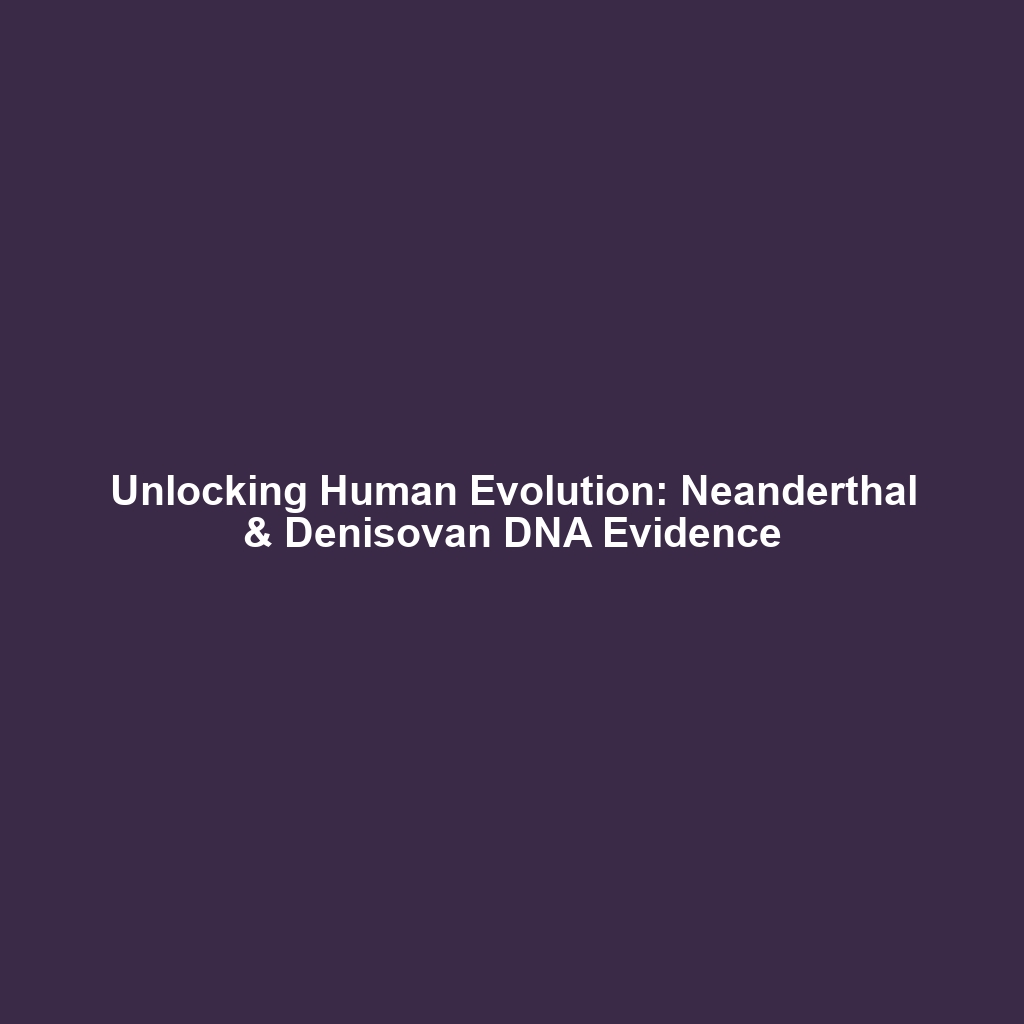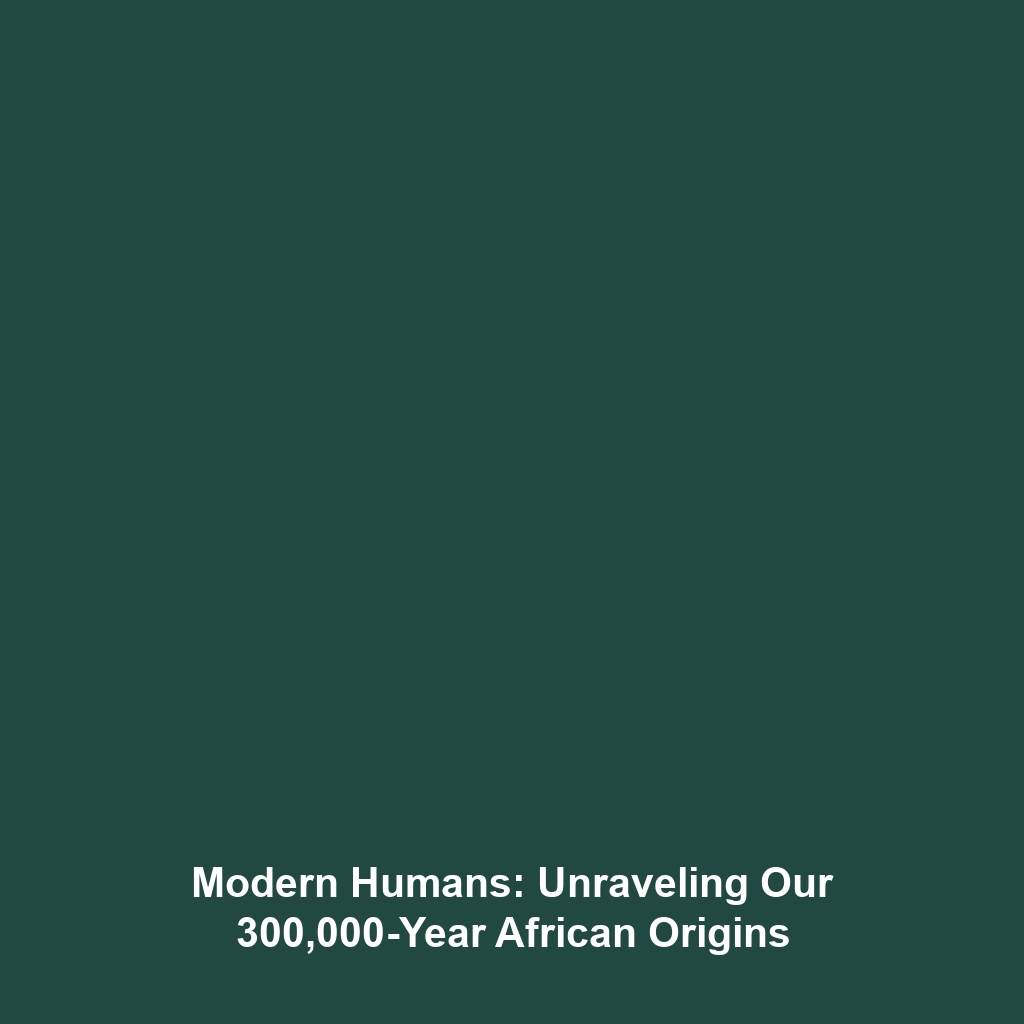The Significance of the First Species of the Genus Homo in Human Evolution
Introduction
The first species of the genus Homo, existing between 2.1 and 1.5 million years ago, plays a pivotal role in our understanding of human evolution. This early species represents a crucial ancestral link connecting apes to modern humans. Its study sheds light on the evolutionary adaptations that paved the way for subsequent species of the genus Homo, including Homo habilis and ultimately, Homo sapiens. By examining the ecological adaptations and physical characteristics of these early humans, researchers can unravel the complexities of our evolutionary journey.
Key Concepts
Several major concepts arise when discussing the first species of the genus Homo, including:
- Evolutionary Significance: The first species of Homo signifies a major evolutionary shift marked by increased brain size and tool usage.
- Biogeography: Understanding the geographical distribution helps contextualize their adaptability to diverse environments.
- Phylogenetic Relationships: This species provides insight into the evolutionary lineage that leads to modern humans.
Evolutionary Adaptations
Analyzing the adaptations of the first Homo species reveals how environmental pressures might have influenced evolutionary traits that are present in later human species.
Applications and Real-World Uses
The study of the first species of the genus Homo holds various applications within the field of human evolution:
- Understanding Evolutionary Biology: Insights gained from this species are fundamental to the study of organismal development and adaptation.
- Anthropological Research: Findings regarding the first Homo species aid anthropologists in reconstructing human behavioral patterns.
- Conservation Efforts: Studying past adaptations informs contemporary wildlife conservation strategies by enhancing our understanding of human impacts on ecosystems.
Current Challenges
While the study of the first Homo species is crucial, several challenges exist:
- Fossil Record Limitations: The incomplete fossil record poses difficulties in accurately determining the species’ characteristics.
- Interpretation of Data: Ambiguities in evolutionary adaptations can lead to varying interpretations among researchers.
- Technological Constraints: The methods used to analyze archaeological sites may offer limited insights into behavioral practices.
Future Research and Innovations
Future research on the first species of the genus Homo promises to uncover more about early human evolution:
- Genetic Analysis: Advances in genetic sequencing may reveal more about evolutionary connections.
- 3D Imaging and Modeling: Innovative technologies can provide enhanced visualization of fossils and artifacts.
- Interdisciplinary Approaches: Collaborations between fields such as genetics, archaeology, and anthropology will likely yield comprehensive insights into human evolution.
Conclusion
In conclusion, the first species of the genus Homo is a cornerstone in the study of human evolution, providing vital information about our ancestors and the evolutionary processes that shaped modern humans. Continued research is essential to unravel more of this complex narrative. For further reading on the evolutionary timeline and its implications, explore articles on the broader context of human evolution or delve into Homo sapiens and their adaptations.









